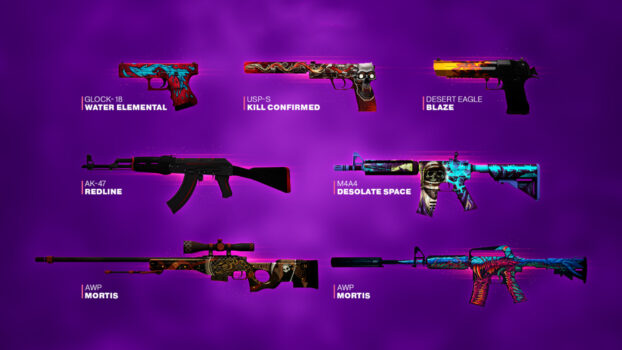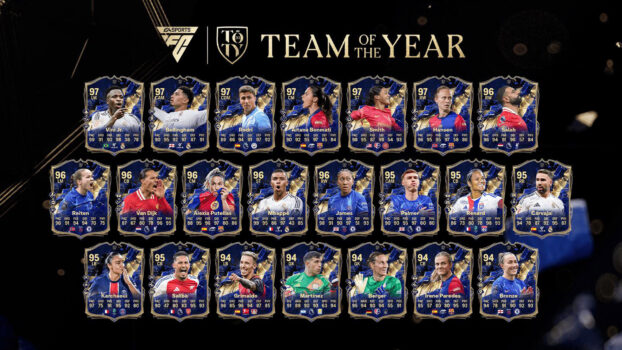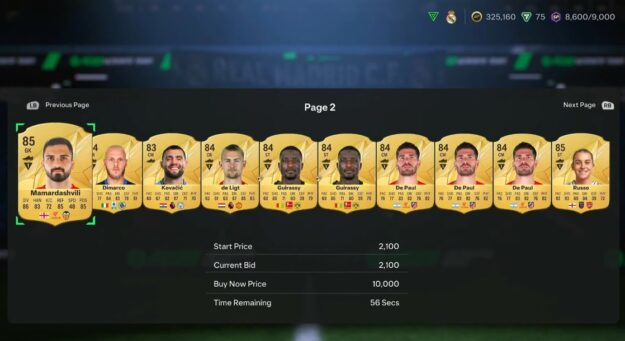The way players express themselves in games has changed a lot over the years. Today, it’s not just about performance, it’s about style, rarity, and what your inventory or squad says about you. Nowhere is this more obvious than in Counter-Strike 2 (CS2) and EA SPORTS FC.
While the two games are very different in gameplay, both have developed thriving ecosystems around digital collectibles: skins in CS2 and cards in EA FC’s Ultimate Team.
Two Sides of the Same Digital Coin
CS2 and EA FC approach digital collectibles differently, but both ultimately serve the same purpose: they create a reason for players to keep grinding, keep spending, and keep showing off.
In CS2, skins are purely cosmetic. You can unbox a weapon skin that adds no gameplay advantage, yet it might be worth hundreds or even thousands of dollars. These skins have value based on rarity, pattern, wear level, and market demand.
With third-party platforms like SkinRave considered one of the best cs2 case opening site, the experience has expanded beyond Valve’s own system. Case battles, daily bonuses, and withdrawal options have turned skin collecting into a full ecosystem that many players treat seriously.

In EA FC, Ultimate Team cards drive the entire game mode. Players build squads using cards pulled from packs, with ratings and chemistry affecting in-game performance. While some cards are common and easy to earn, others like Icons, TOTY, or Ultimate TOTS players are extremely rare and can make a big difference in both gameplay and prestige.
The FUT transfer market adds a trading element, but players are ultimately locked into EA’s system, with no way to sell cards for real-world value.
A Brief History of Each System
The roots of CS2’s skin system go back to Counter-Strike: Global Offensive in 2013, when Valve introduced weapon cases. What started as a simple cosmetic reward quickly grew into a global trading scene.
Rare knives and stickers gained status symbol appeal, and over time, third-party sites helped turn skins into a form of digital currency. CS2 continues that trend today, with sharper visuals and a thriving community of collectors.

EA’s Ultimate Team, on the other hand, launched in FIFA 09 as a downloadable add-on. It was basic at first, but over the years EA built it into the main mode. With weekly promos, dynamic ratings, and the addition of women’s football cards, Ultimate Team became a collectible game within a football sim.
However, unlike CS2’s open market, EA’s system is fully contained where players can’t sell or trade cards outside the in-game economy, and any value is lost once the yearly cycle ends.
Status and Self-Expression
What makes skins and cards more than just digital assets is how they’re used socially. In CS2, equipping a high-tier skin in a competitive match or stream is a subtle way to flex. Knives, gloves, and limited-edition skins often carry a sense of prestige, especially when tied to major esports events. Players build inventories that reflect their style as some go for clean looks, others for flashy rare drops.

In EA FC, squad reveals serve the same purpose. When someone shows off a team stacked with TOTY Mbappé, Prime Ronaldinho, and 96-rated Alexia Putellas, it sends a message. These players aren’t just winning, they’ve either spent a lot of time grinding objectives or a lot of money opening packs. Either way, the team becomes a reflection of dedication, luck, or spending power.
Both systems create environments where what you own becomes part of who you are in the game.
Community-Driven Features That Add Value
Another reason these digital items matter is how they’re tied to the community and competitive ecosystem. In CS2, sites like SkinRave offer unique spins on the case-opening experience. Case battles turn unboxing into a 1v1 competition.
Upgrade mechanics let users risk lower-tier skins for a shot at something better. Streamers often showcase these features, creating viral moments and building a culture around skin collecting.

EA FC has its own parallel in FUT Champs, SBCs, and promo events. Every week brings new card drops and themed squads that shake up the market. EA also leans into player engagement through things like dynamic upgrades and community-voted cards.
The FUT Web App, Transfer Market, and content creator-driven pack openings have all contributed to a culture where players are always chasing the next upgrade.
Where the Models Differ
A key difference between the two games lies in how much control players have over their digital assets.
In CS2, players can trade skins, sell them on the Steam Community Market, or use third-party platforms to cash out. Although Valve still owns the underlying IP, players have more perceived control over their inventory. Skins don’t expire and aren’t locked behind a yearly cycle.

EA FC’s model is more restricted. Once a new game releases, your FUT squad is reset. Cards can’t be sold for real-world money or transferred between accounts. The only trading happens within the in-game market, and even that’s tightly monitored. Players often criticize this system for offering little return on investment, especially after spending money on packs.
What Comes Next?
As digital collectibles continue to gain traction in gaming, there’s growing speculation around blockchain and NFTs. While neither Valve nor EA have formally adopted the technology, the demand for true digital ownership is rising. Some newer games and platforms already offer blockchain-based items with verified scarcity and tradeability.
If mainstream publishers ever adopt these ideas, we could see a major shift in how skins and cards are created, owned, and exchanged. Until then, CS2 offers more flexibility and value persistence, while EA FC maintains a closed system that resets each year.
Skins and cards might seem like two different things, but they serve a similar purpose: they’re ways for players to stand out, express themselves, and stay invested. CS2’s skin economy is more open and built for long-term value, while EA FC’s Ultimate Team is more controlled and time-limited.
 FIFA Infinity The Absolute FIFA Site
FIFA Infinity The Absolute FIFA Site




